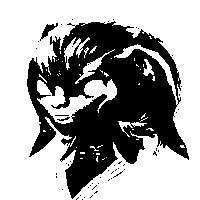Doomcaliber Knight, and its sibling Light and Darkness Dragon, have been staples of rulings trivia for almost as long as they've existed. These cards are peculiar in that they have Quick Effects that are mandatory to activate. As there are very few effects of this kind, documentation around them is quite sparse. Furthermore, these cards are very old. As a result, they have some very quirky historic behaviors that have never been overturned.
Today, I'm here to argue for a better world. I sketch how mandatory Quick Effects could maintain their established behavior in all practical situations, while fitting a modern understanding of game mechanics. I am not here to argue how things are, but how I think things should be. This may be a novel concept for those set on pursuing some "objective truth" about the game, despite the omnipresent evidence of it being but an illusion. Yet, I'm willing to give it a try.

But First: How It Works Right Now
Before I can talk about how I'd like things to be, let's quickly recap how things are. I try to back these assertions up with database citations wherever possible, but some things just aren't documented, and are a result of years-old grapevine yarn of various degrees of veracity.
I'll use Doomcaliber Knight as a stand-in, but mutatis mutandis other mandatory Quick Effects behave identically.
- If an effect is activated that Doomcaliber Knight can respond to, its effect must immediately activate in response. This happens regardless of which player would ordinarily have the first opportunity to respond.
- If multiple effects are activated simultaneously, one of which is a monster effect, Doomcaliber Knight's effect must immediately activate in response, regardless of whether the latest Chain Link is a monster effect:
- If there are multiple Doomcaliber Knights on the field, and a monster effect is activated, all of these Doomcaliber Knights must activate their effects in response. These effects will form a chain.

A Vision of a Better World
If you've followed so far, you can see how these effects' current functionality requires dedicated exceptions to many core game mechanics. Whichever player didn't activate the latest Chain Link has the first opportunity to respond, unless there's a mandatory Quick Effect. "When + activation" effects can only be activated on the immediately next Chain Link, unless they are mandatory.① (And even then, though they can – and must – be activated, they still won't actually work.)
There is, ultimately, no reason why it has to be this way. Here's how I think they ought to work.
- If a player has the opportunity to activate a Quick Effect, and they have mandatory Quick Effects available, they must activate one of these mandatory Quick Effects.
Done. That's it. This one sentence, without any additional caveats. Yet, in practical scenarios, nothing has changed. Let's walk through it.
You activate a monster effect while your opponent controls DoomCal. It is immediately your opponent's turn to respond, and they must activate DoomCal's effect, as it is mandatory.
You activate a monster effect while you control DoomCal. It is your opponent's turn to respond, but they realize that you have DoomCal, so they pass. You must now activate DoomCal's effect, as it is mandatory.
Straightforward, right? Of course, a few scenarios have changed. I'd argue that these are essentially niche edge cases, which will not come up outside of artificial scenarios in trivia quizzes. Even if they do, the vastly reduced complexity makes them far easier to resolve, and far less likely to catch Judges unaware. In other words, I wouldn't lose any sleep over any of them. Let's review.
There are multiple DoomCals, multiple LaDDs, etc. They end up taking turns negating each other, instead of all trying and mostly failing to negate the original effect. But then again, when was the last time you saw one of these – typically it's Lancelot – let alone multiple?
You activate a monster effect and control a negated DoomCal. At least it's not a negated Laggia, I suppose. Your negated DoomCal can no longer pre-empt your opponent before they can use their own Ash Blossom's effect in response. Not really what I'd consider the card's intended use, anyway. Niche edge case.
A monster's Trigger Effect is Chain Link 1, and a Spell's Trigger Effect is Chain Link 2. Your DoomCal will no longer yeet itself into the abyss trying (and failing) to negate Chain Link 1. I suppose this is the most subjective of this bunch, since this one is something that might plausibly come up if you're actually playing DoomCal. The current behavior is incredibly unintuitive anyway, so I wouldn't be bothered by this change.
①: Even though Doomcaliber's current text uses "If", it is widely assumed that this is just an overly broad replacement policy of "all mandatory whens should be ifs" at work. Regardless, Doomcaliber's behavior matches neither "When + activation" nor "If + activation", so the point being made stands either way.

Conclusion
In recent years, KONAMI has been great at changing game mechanics to reduce unnecessary complexity. The April 2020 revisions were an important step in this direction. Subjects that needed a three-page lecture with caveats in 2019 can be aptly summarized by a single line of text in 2022. However, some pain points remain. Mandatory Quick Effects are one of them, and one that would be easily fixed at that. I think it's time.




